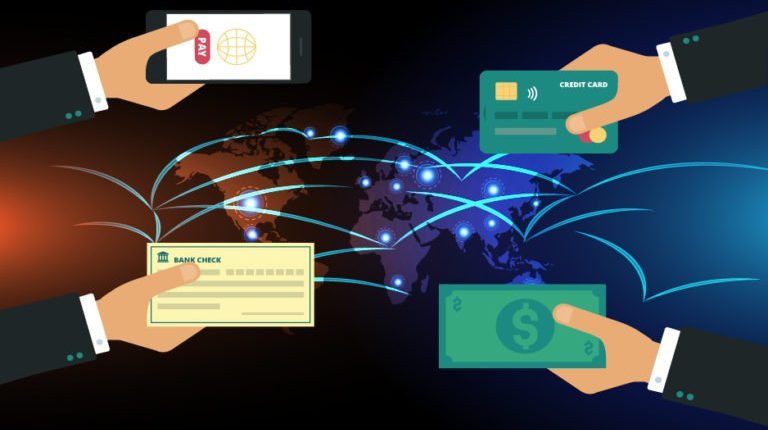Blockchain technology has emerged as a transformative force, revolutionizing various industries, including finance. In this article, we will explore the fundamentals of blockchain technology and its crucial role in facilitating secure and efficient cross-border payments. From its decentralized structure to enhanced transparency and immutability, blockchain technology offers a range of benefits that are reshaping the landscape of international transactions.
Introduction
In today’s interconnected world, cross-border payments have become increasingly important. However, traditional payment systems are often plagued by issues such as delays, high costs, and lack of transparency. Blockchain technology presents a promising solution to these challenges, providing a decentralized, secure, and transparent platform for cross-border payments. In this article, we will delve into the key concepts of blockchain technology and its impact on cross-border transactions.
What is Blockchain Technology?
At its core, blockchain technology is a distributed ledger that records transactions across multiple computers or nodes. Each transaction, or block, is linked to the previous one, forming a chain of blocks. This decentralized structure ensures that no single entity has complete control over the data, making it resistant to tampering and fraud. Blockchain technology operates on a consensus mechanism, where multiple participants validate and verify transactions, ensuring the integrity of the system.
The Role of Blockchain in Cross-Border Payments

Enhanced Security and Trust
Blockchain technology provides enhanced security for cross-border payments. Each transaction is recorded on the blockchain and encrypted using advanced cryptographic techniques. Once a transaction is added to the blockchain, it becomes virtually immutable, meaning it cannot be altered or tampered with. This level of security instills trust in the payment process, reducing the risk of fraud or unauthorized manipulation.
Increased Transparency
Transparency is a critical aspect of cross-border payments, especially when multiple intermediaries are involved. Blockchain technology introduces transparency by providing a shared, decentralized ledger visible to all participants. This allows for real-time tracking and auditing of transactions, ensuring accountability and reducing the potential for errors or discrepancies.
Cost Efficiency
Traditional cross-border payments often involve numerous intermediaries, each charging fees for their services. Blockchain technology eliminates the need for intermediaries, streamlining the payment process and reducing associated costs. By bypassing third-party financial institutions, cross-border payments can be executed directly between parties, resulting in significant cost savings.
Faster Settlement
The decentralized nature of blockchain technology enables faster settlement of cross-border payments. Traditional transactions can take several days or even weeks to complete, due to the involvement of multiple banks and clearinghouses. With blockchain, transactions can be processed and settled more efficiently, often within minutes, thanks to the elimination of intermediaries and the automation of the verification process.
Financial Inclusion
Blockchain technology has the potential to promote financial inclusion by providing access to cross-border payments for underserved populations. Traditional banking systems can be inaccessible to individuals in remote or underbanked areas. By leveraging blockchain technology, individuals with a smartphone and internet connection can participate in cross-border transactions, expanding financial opportunities globally.
Overcoming Challenges and Future Outlook
While blockchain technology holds immense potential for revolutionizing cross-border payments, it also faces challenges. Scalability, regulatory frameworks, and interoperability are areas that need further development and standardization. However, the continuous advancements in blockchain technology, coupled with increasing adoption and collaboration between stakeholders, are paving the way for a future where cross-border payments are more secure, efficient, and accessible than ever before.
Immutable and Tamper-Proof Transactions
- Blockchain technology ensures the immutability and integrity of transactions recorded on the blockchain.
- Each transaction is cryptographically linked to the previous one, creating an unalterable chain of blocks.
- This tamper-proof nature of blockchain transactions provides a high level of trust and security in cross-border payments.
Decentralization and Trustless Transactions
- Blockchain operates on a decentralized network, eliminating the need for a central authority to validate transactions.
- Trust is established through consensus mechanisms, where multiple participants verify and validate transactions.
- This decentralization removes the reliance on intermediaries, increasing trust and efficiency in cross-border payments.
Smart Contracts for Automated Payments
- Smart contracts are self-executing contracts with predefined rules and conditions stored on the blockchain.
- They automate payment settlements in cross-border transactions based on the fulfillment of specific criteria.
- Smart contracts eliminate the need for manual intervention, ensuring accurate and timely payments between parties.
Interoperability for Seamless Transactions
- Interoperability refers to the ability of different blockchain networks to communicate and interact with each other.
- Blockchain interoperability is crucial for cross-border payments, enabling seamless transactions between diverse blockchain ecosystems.
- Efforts are being made to develop standards and protocols to enhance interoperability and facilitate cross-chain transactions.
Blockchain-Based Identity Verification
- Blockchain technology can revolutionize identity verification in cross-border payments.
- By storing identity information on the blockchain, individuals can securely and privately verify their identities.
- This reduces the need for repetitive identity verification processes, streamlining cross-border transactions and enhancing security.
Potential for Reduced Remittance Costs
- Remittances often come with high fees, especially for cross-border transactions.
- Blockchain technology has the potential to reduce these costs by eliminating intermediaries and reducing transaction fees.
- The direct peer-to-peer nature of blockchain-based remittances can result in significant cost savings for individuals and businesses.
Enhanced Security and Fraud Prevention
Blockchain technology provides enhanced security for cross-border payments. Each transaction is encrypted and recorded on the blockchain, making it difficult for unauthorized parties to manipulate or tamper with the transaction data. The decentralized nature of blockchain ensures that there is no single point of failure, making it highly secure against cyberattacks. Additionally, the use of cryptographic techniques and consensus mechanisms ensures the integrity and authenticity of transactions, reducing the risk of fraud in cross-border payments.
Improved Transparency and Accountability
Transparency is a fundamental characteristic of blockchain technology, offering increased visibility and accountability in cross-border payments. Every transaction recorded on the blockchain is transparent and visible to all participants in the network. This transparency reduces the risk of disputes, as each party can independently verify and validate the transaction details. Additionally, the immutability of blockchain records ensures an accurate and auditable transaction history, providing a high level of transparency in cross-border payments.
Streamlined Compliance and Regulatory Processes
Blockchain technology has the potential to streamline compliance and regulatory processes in cross-border payments. By storing transaction information on the blockchain, authorities can easily access and monitor cross-border transactions, enhancing regulatory oversight. Smart contracts can also be programmed to enforce compliance with regulatory requirements, automatically executing predefined rules and conditions. This automation reduces the administrative burden and ensures adherence to regulatory frameworks, improving the efficiency of cross-border payment compliance processes.
Greater Financial Inclusion and Access
Blockchain technology opens up opportunities for greater financial inclusion and access to cross-border payments. Traditional banking systems may be inaccessible or unaffordable for individuals in underserved areas or developing countries. However, with blockchain-based solutions, individuals with internet access and a smartphone can participate in cross-border transactions, bypassing the need for a traditional bank account. This empowers individuals and businesses by providing them with direct access to global financial networks, fostering economic growth and inclusion.
Efficient Cross-Border Settlements
The decentralized nature of blockchain technology facilitates faster and more efficient cross-border settlements. Traditional cross-border settlements can involve multiple intermediaries, resulting in delays, high costs, and complexities. Blockchain eliminates the need for intermediaries, allowing for direct peer-to-peer transactions. With smart contracts automating the verification and settlement process, cross-border settlements can be completed in real-time or near real-time, enhancing efficiency and reducing settlement times.
These additional subtopics delve deeper into the advantages and implications of blockchain technology in cross-border payments, highlighting aspects such as enhanced security, transparency, streamlined compliance, financial inclusion, and efficient settlements.
Reducing Intermediary Risks and Costs
Blockchain technology eliminates the need for multiple intermediaries in cross-border payments, reducing the associated risks and costs. Traditional payment systems often involve banks, payment processors, and clearinghouses, each charging fees for their services. By leveraging blockchain technology, cross-border transactions can occur directly between parties, cutting out intermediaries and lowering transaction costs. This direct peer-to-peer approach not only reduces fees but also minimizes the potential for errors, delays, and disputes caused by the involvement of multiple intermediaries.
Facilitating Cross-Border Trade and E-commerce
Blockchain technology facilitates cross-border trade and e-commerce by providing a secure and transparent platform for transactions. In traditional cross-border trade, the verification and transfer of goods and payments can be time-consuming and complex. With blockchain, smart contracts can automate and streamline these processes, ensuring that goods are delivered and payments are executed upon the fulfillment of predefined conditions. This eliminates the need for intermediaries, reduces transaction costs, and enhances the efficiency of cross-border trade and e-commerce.
Mitigating Currency Exchange Risks
Cross-border transactions often involve currency conversions, exposing parties to exchange rate risks and associated costs. Blockchain-based cryptocurrencies, such as stablecoins, can provide a solution by enabling cross-border transactions without the need for immediate currency conversions. Parties can transact using a stablecoin that is pegged to a specific fiat currency, reducing exchange rate risks and simplifying the payment process. This mitigates currency volatility and enables smoother cross-border transactions, especially in regions where access to stable currencies is limited.
Improving Liquidity for Small and Medium Enterprises (SMEs)
Blockchain technology can improve liquidity for small and medium enterprises (SMEs) engaging in cross-border transactions. Traditional banking systems often have stringent requirements and lengthy approval processes for SMEs to access financing and credit facilities. Blockchain-based platforms, such as decentralized finance (DeFi) and peer-to-peer lending platforms, offer alternative financing options for SMEs. These platforms leverage blockchain’s transparency and smart contract capabilities to facilitate access to capital, enabling SMEs to participate more actively in cross-border trade and expand their business operations.
Enabling Micropayments and Microtransactions
Blockchain technology enables micropayments and microtransactions, allowing for the transfer of small amounts with minimal transaction fees. This has significant implications for cross-border transactions involving small-scale payments, such as digital content purchases, subscription services, or freelance work. Traditional payment systems often impose high fees or minimum transaction thresholds that make small-scale cross-border transactions uneconomical. With blockchain-based cryptocurrencies, parties can engage in cost-effective micropayments, fostering greater participation in the global digital economy.
These additional subtopics further explore the advantages of blockchain technology in cross-border payments, highlighting areas such as reducing intermediary risks and costs, facilitating cross-border trade and e-commerce, mitigating currency exchange risks, improving liquidity for SMEs, and enabling micropayments and microtransactions.
Conclusion
Blockchain technology is reshaping the landscape of cross-border payments. Its decentralized structure, enhanced security, transparency, cost efficiency, and potential for financial inclusion are transforming the way we conduct international transactions. As blockchain technology continues to evolve and overcome challenges, its role in facilitating secure and efficient cross-border payments will become increasingly prominent, ushering in a new era of global financial connectivity.















